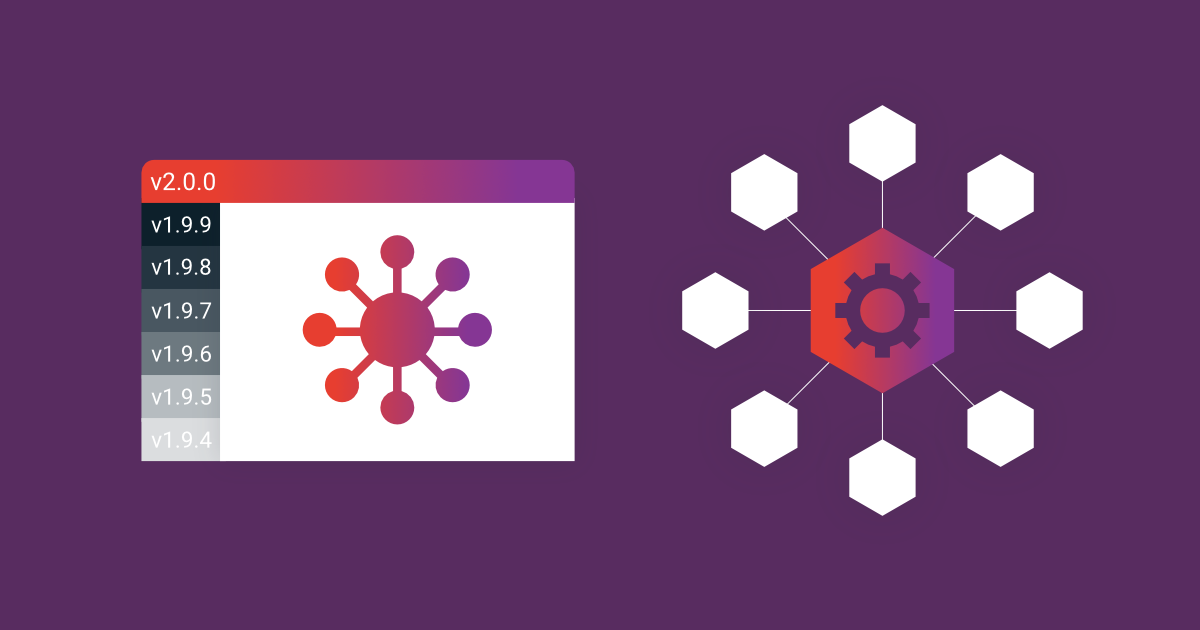Microservices architecture is a software development approach that structures an application as a collection of small, independent services, each running in its own process and communicating with lightweight mechanisms, such as APIs. This approach has become increasingly popular due to its numerous benefits, including increased flexibility, scalability, and fault tolerance.
In a microservices architecture, APIs, service discovery, and registry play crucial roles in facilitating communication and managing the services. APIs provide a standardized way for services to communicate with each other, while service discovery allows them to locate and communicate with each other dynamically. Registry, on the other hand, enables services to register and discover other services, as well as manage metadata and configurations.
The purpose of this post is to provide a comprehensive guide on how to integrate APIs with service discovery and registry in microservices, outlining the benefits, challenges, and best practices for achieving a reliable and scalable microservices architecture.
APIs in microservices
In the context of microservices, APIs are a standardized way for services to communicate with each other. Each microservice exposes an API that defines the set of operations that it supports, along with the input and output parameters for those operations. These APIs typically use lightweight protocols, such as REST, to allow communication between services.
APIs in microservices architecture enable loose coupling, as each service can be developed and deployed independently, without needing to know the implementation details of the other services. APIs also enable scalability, as they can be exposed to external clients, allowing multiple clients to access the same microservice concurrently. Additionally, APIs in microservices architecture promote agility, as they can be updated and extended easily without impacting other services in the system.
Types of APIs
Different types of APIs can have different advantages and disadvantages, and the choice of which one to use depends on the specific requirements of the application.
Here are some of the most common types of APIs in the context of microservices:
REST APIs:
REST (Representational State Transfer) is a lightweight architectural style that uses HTTP and other web standards for data exchange. RESTful APIs are based on the REST architecture and use HTTP methods (such as GET, POST, PUT, and DELETE) to represent the CRUD (Create, Read, Update, and Delete) operations.
SOAP APIs:
SOAP (Simple Object Access Protocol) is an XML-based messaging protocol that allows for exchanging structured data between applications over a network. SOAP APIs are based on the SOAP protocol and typically use XML or JSON (JavaScript Object Notation) for data exchange.
GraphQL APIs:
GraphQL is a query language for APIs that was developed by Facebook. GraphQL APIs use a schema to define the data available through the API and allow clients to query the API for specific data. GraphQL APIs can be more flexible and efficient than REST APIs, as they allow clients to specify the exact data they need and eliminate over-fetching of data.
Webhooks:
Webhooks are a type of API that allows an application to notify another application when a specific event occurs. Instead of requesting data from an API, the receiving application specifies a URL that the sending application will use to post data when the event occurs.
gRPC APIs:
gRPC is a high-performance, open-source RPC (Remote Procedure Call) framework developed by Google. gRPC APIs use a protocol buffer encoding to define the service interface and support streaming and bidirectional communication.
Different types of APIs can have different advantages and disadvantages, and the choice of which one to use depends on the specific requirements of the application.
The benefits and challenges of APIs in microservices
APIs (Application Programming Interfaces) are a fundamental component of microservices architecture. They enable services to communicate with each other in a standardized way, promoting loose coupling, scalability, and agility. However, using APIs in microservices architecture also presents a number of benefits and challenges, as outlined below:
Benefits:
- Loose Coupling:
APIs enable microservices to be developed and deployed independently, without needing to know the implementation details of the other services. This promotes loose coupling, making the system more resilient to changes and easier to maintain. - Scalability:
APIs can be exposed to external clients, allowing multiple clients to access the same microservice concurrently. This can enable the system to handle increased traffic and demand, as well as to scale horizontally by adding more instances of a microservice. - Agility:
APIs enable microservices to be updated and extended easily without impacting other services in the system. This allows for greater flexibility and agility in responding to changing business requirements. - Standardization:
APIs provide a standardized way for services to communicate with each other, enabling interoperability and facilitating integration with other systems and services.
Challenges:
- API Versioning:
As microservices evolve, their APIs may change, making it challenging to ensure compatibility between different versions of the same API. API versioning strategies must be implemented to handle backward compatibility and ensure a smooth transition to new versions. - API Security:
APIs can be a security risk if not properly secured, as they provide a point of entry for attackers to exploit vulnerabilities in the system. Proper authentication, authorization, and encryption strategies must be implemented to ensure API security. - API Documentation:
APIs need to be well documented to enable other developers to understand how to use them. This can be a challenge when dealing with a large number of APIs or APIs that are poorly documented. - API Testing:
APIs need to be thoroughly tested to ensure they are functioning as intended and are compatible with other APIs in the system. This can be challenging, particularly when dealing with complex APIs or APIs that have dependencies on other services.
Service discovery in microservices and its importance
In the context of microservices, service discovery is the process of dynamically finding and locating services in a distributed system. In a microservices architecture, services are typically deployed on multiple instances, making it difficult for clients to locate the service instance they need. Service discovery helps to address this issue by providing a central registry that keeps track of the location and availability of all service instances.
Service discovery is important in microservices architecture for several reasons:
- Dynamic Configuration: As microservices are added, removed, or scaled up or down, the location and availability of service instances can change frequently. Service discovery provides a dynamic way to configure client applications to ensure they can always connect to the appropriate service instance.
- Load Balancing: In a distributed system, service instances may be located on different servers, which can result in varying levels of load on each server. Service discovery provides load balancing capabilities to distribute traffic evenly across all available service instances, ensuring optimal performance.
- Resilience: Service discovery can help to make a system more resilient by allowing it to automatically recover from failures or outages. When a service instance becomes unavailable, the registry can detect this and redirect clients to another available instance.
- Simplified Management: By providing a central registry of all available service instances, service discovery simplifies the management and monitoring of microservices. This can make it easier to scale and manage large, complex systems.
Service discovery is a critical component of microservices architecture, enabling dynamic configuration, load balancing, resilience, and simplified management of distributed systems.
Types of service discovery mechanisms and examples
There are two main types of service discovery mechanisms in microservices architecture: client-side discovery and server-side discovery.
Client-side discovery:
In client-side discovery, each microservice instance registers itself with a service registry and is responsible for discovering other services by querying the registry. When a client needs to communicate with another service, it queries the registry to obtain the location of the target service instances. The client-side library is then responsible for load balancing the request against the available service instances.
Examples of client-side discovery tools include:
- Eureka:
A service registry that enables service instances to register themselves and clients to discover services. - Consul:
A service mesh that provides service discovery and key-value storage for microservices. - Zookeeper:
A distributed coordination service that provides naming and synchronization services for distributed applications.
Server-side Discovery:
In server-side discovery, the client makes a request a load balancer. The load balancer queries the service registry and is responsible for forwarding the request to one of the availble service instances. This method abstracts the task of discovering and load balancing requests from the client to the server.
Examples of server-side discovery tools include:
- Kubernetes:
An open-source platform that provides container orchestration and service discovery for microservices. - HashiCorp Nomad:
A container orchestration platform that provides service discovery - Amazon Elastic Load Balancer:
A service that provides load balancing and service discovery for AWS microservices.
Registry in microservices and its importance
In the context of microservices, a registry is a central database or repository that maintains information about all the available services in a distributed system. The registry acts as a single source of truth for all service instances, providing information such as their location, status, and metadata.
The importance of a registry in microservices architecture lies in its ability to enable effective service discovery, load balancing, and dynamic configuration. Specifically, a registry provides the following benefits:
- Service Discovery: By maintaining a central repository of service instances, a registry enables client applications to discover and locate the service they need, regardless of where it is located within the system.
- Load Balancing: A registry can (optionally) be used to provide load balancing capabilities, directing client traffic to the least loaded or most available service instance.
- Dynamic Configuration: As the number of service instances in a distributed system changes over time, a registry can be used to dynamically configure client applications to ensure they are always connected to the appropriate service instance.
- Consistency and Reliability: By providing a single source of truth for all service instances, a registry ensures consistency and reliability across the distributed system.
- Management and Monitoring: A registry can provide management and monitoring capabilities, allowing administrators to track and monitor the status and health of service instances.
Registry mechanisms and examples
The types of registry mechanisms that can be used in microservices architecture include service registries and API gateways. Each type of registry mechanism provides different benefits and functionality, and the choice of registry mechanism will depend on the specific needs and requirements of the microservices architecture.
A service registry is a centralized database that maintains a list of all available service instances within a microservices architecture. Examples of popular service registry tools include Consul, ZooKeeper, and etcd.
An API gateway is a server that acts as an intermediary between client applications and a microservices architecture. The API gateway maintains a registry of available services and routes incoming requests to the appropriate service instance. Examples of popular API gateway tools include Kong, Tyk, and AWS API Gateway.
Integrating APIs with service discovery and registry in microservices
Integrating APIs with service discovery and registry is essential for building scalable and robust microservices architectures. By integrating APIs with these components, we can take advantage of the dynamic configuration, load balancing, resilience, and simplified management capabilities that they offer.
When a new microservice is deployed, the service registry keeps track of its location and availability, and the API gateway can then route incoming requests to the appropriate service instance. This dynamic configuration ensures that client applications are always connected to the appropriate service instance, even as the number of service instances in a distributed system changes over time.
Additionally, service discovery and registry can provide load balancing capabilities, distributing traffic evenly across all available service instances to ensure optimal performance. This can help prevent overload on specific servers and reduce the chances of system failures due to excessive load.
Integrating APIs with service discovery and registry can also improve the resilience of a microservices architecture by allowing the system to automatically recover from failures or outages. When a service instance becomes unavailable, the registry can detect this and redirect clients to another available instance, ensuring that the system continues to function with minimal disruption.
Finally, integrating APIs with service discovery and registry can simplify the management and monitoring of a microservices architecture. By providing a central repository of all available service instances, administrators can more easily track and monitor the status and health of service instances, making it easier to scale and manage large, complex systems.
5 key steps in integrating APIs with service directory and registry
Integrating APIs with service discovery and registry involves a few key steps, including using API gateways, registering APIs in the registry, and leveraging service discovery in API calls. Here is a brief overview of each step:
- Use an API gateway:
An API gateway can provide a unified entry point for all API requests. The API gateway can be integrated with the service registry to enable dynamic routing of incoming requests to the appropriate service instance. - Register APIs in the registry:
All APIs in a microservices architecture should be registered in the service registry, along with their metadata, such as their endpoints and health information. This information can be used by a cluster manager or API gateway to dynamically route incoming requests to the appropriate service instance. - Leverage service discovery in API calls:
When making API calls, client applications should leverage the service discovery capabilities of the microservices architecture to dynamically locate the appropriate service instance. This can be done by including the service name in the API call and allowing the cluster manager or API gateway to route the request to the appropriate service instance. - Implement load balancing:
The service registry can also provide load balancing capabilities to distribute traffic evenly across all available service instances. By enabling load balancing, the system can prevent overload on specific servers and reduce the chances of system failures due to excessive load. - Monitor and manage the services:
The service registry and service discovery tool should be used to monitor and manage the status and health of the services in the microservices architecture. This can help ensure that the system is working as expected and can quickly identify and resolve any issues that arise.
Best practices and considerations for API integration with service discovery and registry
Integrating APIs with service discovery and registry in a microservices architecture requires careful planning and consideration of best practices and key considerations, such as versioning, security, and monitoring. Here are some best practices and considerations to keep in mind:
Versioning:
It is important to maintain proper versioning of APIs to avoid compatibility issues and enable smooth upgrades. This can be done by using semantic versioning and maintaining a clear record of version changes in the service registry.
Security:
APIs should be secured using appropriate authentication and authorization mechanisms, such as OAuth2 or JWT. The service registry and service discovery tool should also be configured to enforce secure communication and prevent unauthorized access to services.
Monitoring:
Effective monitoring is critical for detecting issues in the microservices architecture, such as service failures or traffic spikes. Monitoring tools can be integrated with the service registry and service discovery tool to track service health and performance metrics.
Service discovery optimization:
To minimize the time it takes for service discovery to return the correct service, consider caching and keeping an updated list of the service registry entries.
Centralized logging:
Centralized logging of service requests can help to track and monitor the services.
Testability:
It is essential to have comprehensive unit and integration testing practices to ensure that the system works as expected and can withstand the expected load.
Service contracts and API documentation:
Ensure there is a clear and complete service contract between service providers and service consumers. Document the API endpoints and descriptions with possible requests and responses.
By considering these best practices and key considerations, organizations can integrate APIs with service discovery and registry in a secure, scalable, and resilient way, making their microservices architecture more effective and efficient.
The power of integrating APIs with service discovery and registry for a scalable microservices architecture
Integrating APIs with service discovery and registry in a microservices architecture is critical for building a scalable and resilient system. By using a cluster manager, API gateway, registering APIs in the registry, leveraging service discovery in API calls, implementing load balancing, and monitoring and managing the services, organizations can improve the performance, resilience, and overall effectiveness of their microservices architecture.
It is also important to consider best practices and key considerations such as versioning, security, and monitoring to ensure a secure, scalable, and resilient system.
As the use of microservices architecture and APIs continues to grow, there is always more to learn and share. We encourage readers to continue learning about this topic and share their experiences with others to further grow and improve their understanding of this field.
By leveraging the power of service discovery and registry in combination with APIs, organizations can create an efficient and effective microservices architecture that will support their business needs for years to come.





